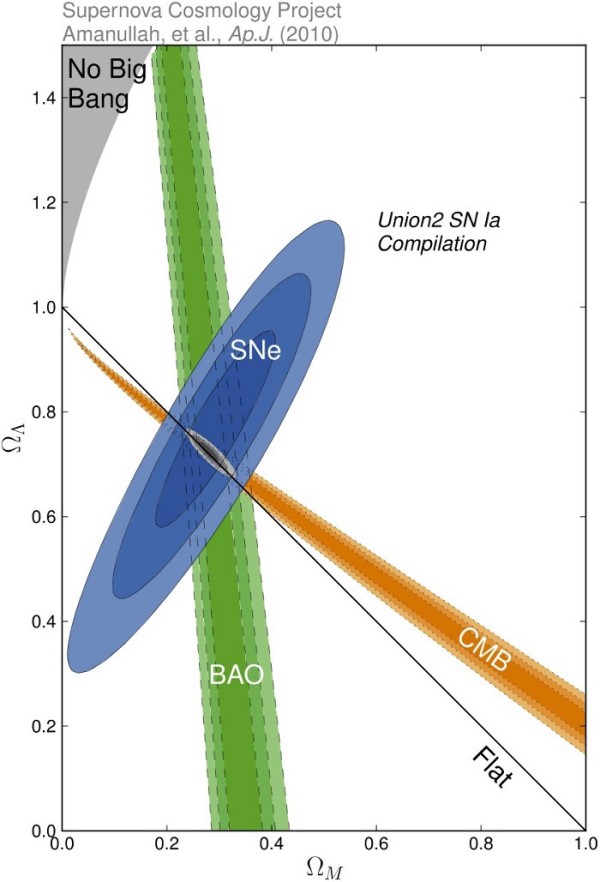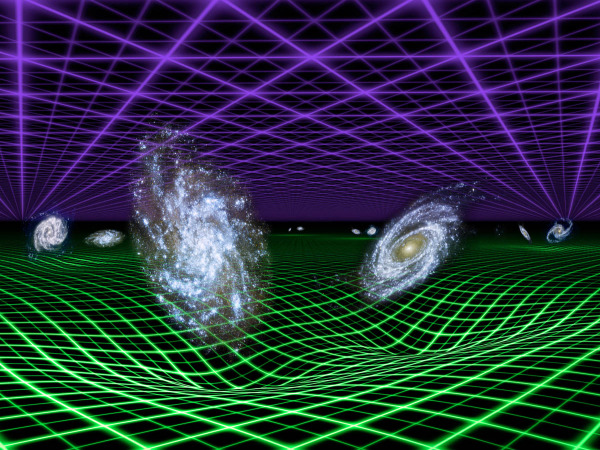“I must choose between despair and Energy —— I choose the latter.” -John Keats
Yes, we know that the fabric of the Universe is not made up of space and time but rather a unified spacetime; that the spacetime isn't static but rather expands as the Universe goes on; and that the expansion isn't slowing down but is rather accelerating as we continue. The term we give to this phenomenon is dark energy, and we arrive at it via multiple, independent lines of evidence.
But with all of that, just what exactly is dark energy? How can we come to understand it, and what can (and can't) we rule out about its very nature?
Come and find out on a deep, fun and fascinating edition of Ask Ethan!
- Log in to post comments



it's all very beautiful looks with the expansion of the Universe! Only what is the speed of these processes? It may be an answer to this question because i don't think it is too difficult! i'm very sorry that i dare to bet that a stupid question? and if it is already hopelessly stupid so ask for directions where i totally confused. just a stupid Pole!!!
without any meaning!?(v2)
s7hummel.wordpress.com
medium.com/@s7hummel
Here's an idea or a question.... if Universe is isotropic, then all observers in it should measure CMB in the same way. No? If they do measure CMB the same way, then that should (in a way) be a Universal time... of sorts. Meaning... all observers should be able to "synchronize" events based on CMB temperature.
That would make CMB as a sort of reference frame for the whole of our visible universe. Does this make sense?
Noobie question: if dark energy is, by consensus, inherent to the quantum vacuum, isn't this a violation of the conservation of mass and energy? Or is it just a cop out? I.e. we don't understand the nature or origin of dark energy, so let's say it's inherent to the quantum background something or other?
Sinisa: yes. See the CMBR dipole anisotropy. The CMB provides a de-facto reference frame for the whole universe. But note that the universe might not be isotropic. For some observers, half the sky might be dark.
As for Ethan's article, IMHO dark energy is indeed "the energy inherent to space itself". There’s an energy-pressure diagonal in the stress-energy tensor, and you can think of space expanding like a stress-ball when you open your fist. But I don't see how the spatial energy density can remain constant. That's creation ex-nihilo, it’s in breach of conservation of energy. I think one has to look again at the balloon analogy, which Ethan depicted. The balloon is in vacuum, the pressure within is counterbalanced by the tension in the skin, and there’s two ways to make it bigger. You can increase the pressure by blowing air into it, which is in breach of conservation of energy. Or you reduce the tension by making the skin weaker. Like it’s a bubblegum balloon. The skin gets weaker so the balloon expands, so the skin gets weaker, and so on.
Replace 2D skin with 3D space, and it isn’t dark energy per se causing the increasing expansion, it’s the reducing “strength of space”. This is maybe unfamiliar to some, but it’s related to the strong force. See http://arxiv.org/abs/0912.2678 where you can read this on page 5:
"We see that the modification of GR entailed by MOND does not enter here by modifying the ‘elasticity’ of spacetime (except perhaps its strength), as is done in f(R) theories and the like."
@Sinisa #2: As John Duffield said, the CMB does indeed provide a "rest frame for the Universe" which all observers can agree upon.
This doesn't violate SR (or GR), because it is not a "preferred" frame (i.e., a frame in which the laws of physics are special or different), just a "natural" rest frame, in the same way that "Earth at rest" is a natural frame for all of us standing on the ground to use together.
An interesting point: Even though observers everywhere can use the CMB as a rest frame, and agree on what it looks like, they will each, everywhere, see *DIFFERENT* patterns in the fluctuations. That's because they all have a slightly different perspective towards the "surface of last scattering." It's analogous (but not the same!) as the way different viewers will see different speckle patterns from a laser pointer on a blank wall.
@Michael Kelsey:
It is difficult to understand how the CMB can provide a "natural" rest frame, when we measure three drastically different velocities for our motion with respect to it (CMB dipole, radio sky dipole, quasar dipole), with the third being in the opposite direction of the other two, though all three are along the same axis.
Puzzling.
If the dipoles are truly measuring our motion wrt the CMB, they should agree; we should expect and observe all three dipoles to report a similar motion at a similar velocity in a similar direction.
But they don't.
http://arxiv.org/abs/1405.4796
Good point Rick. For myself I think cosmology should be based on evidence and observation, not on some "cosmological principle" that somebody pulled out of a hat.
Why do we have to interpret the cosmological constant as an energy inherent in space itself? Isn't that putting it on the wrong side of Einstein's equation? Couldn't it just be a quirk of how space reacts to matter? It's not like Nature is required to give us nice formulas to with with.
@Rick DeLano #6: Thank you very much for that, Rick! I'm not an astrophysicist (I do particle physics, and currently am part of a dark matter search), so I don't always pick up the cool stuff in astro-ph.
You are absolutely right (at least as I understand it) that if the CMB dipole anisotropy reflects a _real_ peculiar motion, then we should measure the same motion, within uncertainties, by any other cosmologically-averaged method.
If Singal's result -- that a full-sky survey of quasars shows a dipole which is so much larger in magnitude, and opposite in direction, than the CMB dipole -- is correct, then there is a serious question about the interpretation of _either_ of those dipoles as being a true peculiar motion. I did preface that with, "if": his result, which is currently just a preprint, needs to be appropriately vetted before jumping to conclusions. But it is still extremely interesting.
Hie Ethan
Have you noticed how the graph depicting the distance modulus of galaxies against the redshift resembles a galaxy rotation curve of a LSB galaxy? Well if you read this preprint https://www.academia.edu/8604226/The_Schwarzschild_Solution_to_the_Nexu… you will understand the connection since the same equation describes both phenomena! This preprint has been received well by specialist in gravitation and cosmology.
John Duffield beat me to the question about the creation of dark energy and and how this relates to the conservation of energy, but I would really appreciate some clarification.